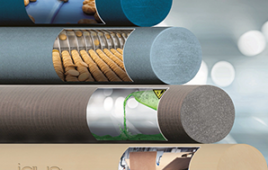By Terry Persun, Technology Journalist
The Society of Automotive Engineers (SAE) initiated Formula SAE in 1979, a program in which students design, build, and race an open wheeled, single seated racecar. Within the program Global Formula Racing (GFR) emerged in 2010, a team in which students from Germany and the US collaborate on the design and manufacture of a Formula racecar. GFR is the first global student program in the history of both the US-based Formula SAE and the EU-based Formula Student programs.

Global Formula Racing teams from two countries competed worldwide with the only aerodynamic vehicle in the races.
The teams involved in the GFR were the former BA Racing Team from Duale Hochschule Baden-Wurttemberg-Ravensburg (DHBW-R), Germany, and the Beaver Racing Team, Oregon State University (OSU). The universities share physical and intellectual resources through advanced communications technologies to design and build their highly competitive vehicle.
Both schools provide the design, manufacturing, and testing simultaneously. Two cars will be made, a combustion car and a fully electric car. The OSU campus in Corvallis, OR will operate the combustion car in USA events, as well as Formula Student events in Europe, while the DHBW-R campus in Friedrichshafen, Baden-Wurttemberg will operate the electric car only in Formula Student competitions in Europe.

The front wing main plain inserts and front wing flap inserts were an important part of the GFR racecar’s overall design.
The GFR racecar is the only Aero car to compete in most races. When the team looked to decrease weight and wind resistance, they turned to Solid Concepts to help with the creation of aerodynamic end plates. These products were used as attachments that connected end plates and profiles. It was important for the shape to be variable in design, so the team chose to use carbon fiber reinforced plastic material to fashion the parts. “The strength and structure of the material made it possible for us to have a strong connection between the carbon fiber end-plates and the carbon fiber profiles,” said Michael Wax, the spokesperson for the team. “This was especially necessary for the front wing, which would receive some high impact hits due to cone contact.”
According to team members, Solid Concepts was key in helping them present their Aerodynamic package in an outstanding manner, which finally led to their most successful season of Global Formula Racing. The car roared through autocross, putting down impressive times of 58.890 and 56.830 seconds. Despite not being able to complete all four runs, the team’s second time earned them first place and a 2.4 second gap to second place.

Components for the rear wing main plain inserts and rear wing flap inserts were made by Solid Concepts of Valencia, CA.
The team’s full aerodynamics package included the front and rear wings complemented by an undertray. Noted Wax, “The aerodynamics helped to sustain a high cornering speed.” Furthermore, the aerodynamics provided an average of two seconds per lap faster speeds over other teams in both Autocross and Endurance races.
The front wing main plain inserts and front wing flap inserts, as well as the rear wing main plain inserts and rear wing flap inserts were delivered as they would be used in the racecar. No secondary machining or fabrication work was necessary for them to work.
Solid Concepts Inc.
www.solidconcepts.com
Filed Under: Automotive, Materials • advanced





So why was the “racer” not able to complete the lap?
Probably some sort of mechanical issue
Having competed with FSAE cars in autocross, I don’t think I’ve ever seen one complete all its runs, and if so, not without a necessary mechanical repair/adjustment. It’s no surprise, though – building a racecar and having it come out of the gate perfect isn’t something I’d expect!
“Formula One”? That is a total misnomer here.
Possibly Cockpit error.
-It may have hit a cone and bent a wing under a tire.
-It may have spun off the course and hit something hard.
Possibly mechanical failure.
-The transmission may have developed more than one neutral.
-A fastener may have failed.
A lot of things can happen on a racetrack. That is why it is a proving ground.
What does this have to do with Formula 1, other than being spammed on the subreddit?